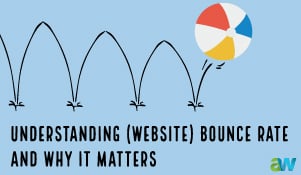Is your website an asset to your business? Does it contribute in a quantitative or qualitative way to your bottom line?
Whether you have just launched your website or have been enjoying the results of your site for a year or more, you should be conducting a periodic website audit to guide both ongoing improvements and to build a foundation for a redesign when the time comes. At a minimum, regular site traffic analysis (review of your statistics) is a good starting point. We recommend that clients conduct a more detailed review at least once a quarter to ensure that there are no lost opportunities and that their websites are continuing to put “the best foot forward.”
The word “audit” sounds daunting but when broken down, the website audit process is simply a review of your site from two perspectives: your visitors and yours. Here are a few key considerations that should be reviewed when you evaluate your website.
(1) Does your website speak to each of your target markets?
How do you segment your client base? Who are the different potential buyers for each aspect of your products and services? Is there content on your site designed to speak to each of these? Have you considered whether your Web audience might be different from your traditional markets, and if so, how do you capitalize on that?
(2) Does your content engage your visitors and forge a connection?
For prospective clients who have not met you in person, the website is the first impression gained of your business. The challenge you face is making a human connection in a virtual environment. The content—both selection and tone—is your handshake.
Consider a first encounter with a new prospect—you don’t tell someone every detail about what you offer; you address key information about how your products or services can solve a need. Your time is usually limited, so you are selective about how you position yourself, establish credibility, and offer solutions. So it is with the web; your visitor’s attention span is short, so your content must engage and concisely outline your competitive advantage.
If you must include extensive details, can this information be included as a PDF? If providing technical information, data sheets, and case studies are required, can the information be segmented and put in a sidebar? As a download? The key is to anticipate the visitor’s need without overwhelming him or her with content. Bulleted information is a quicker, easier read, and having supporting information visible, but in a downloadable format, keeps your pages clean, which translates to being “more likely to be read.”
(3) Have you positioned yourself as an expert in your industry?
Spotlighting your expertise not only builds your credibility, it increases your exposure on the Internet. One of the most effective means of gaining exposure is to publish articles, ebooks, and white papers or provide podcasts on your site. Can you comment on the latest developments in your industry and how they relate to benefits for your clients? Can you detail ways for your clients to extract additional value from your products and services? If you offer articles, do you provide a printer-friendly option? Send to a friend?
If you do include articles, ebooks, podcasts or other online media, are you keeping these current? What is your most recent posting? Do you announce new offerings via an email communication or newsletter to your client base?
(4) Are your claims substantiated?
If you claim that your products or services achieve results, do you have clear examples on your site that substantiate this? Do you have case studies, client lists, and testimonials available? Have third parties tested your products? Can their findings be posted?
Third party endorsements create more impact and credibility than promotional text; they should not be relegated to a separate “testimonials” page—these are rarely visited. Instead, consider that visitors will go directly to the pages for products and services they are interested in. Having a testimonial specific to that product or service on the same page confirms for the visitor that you have successfully delivered on your claim.
(5) Is your site making the best use of available technologies?
Does your site incorporate online developments in your field? What technologies have your competitors provided on their websites? Not only can you benefit from staying current with available technologies, a lack of such technologies can reflect negatively on your credibility. For example, a bank that did not offer online banking would appear to be behind the times. What are the technologies specific to your products and services that you should provide? What expectations do your clients hold?
(6) Do you have a call to action?
What is the action that you want each of your target markets to take? Is it to make a purchase online? To schedule an appointment? To request information? Complete an application? Whatever your desired action may be, to get it, you must ask for it! Many sites include response mechanisms, but leave them buried within the site. Your visitors should not have to work to decide on “the next step.” Make a clear, visible invitation for your prospects to interact with you, and keep it easy and obvious.
(7) Does your site support your offline promotional efforts?
How do you direct visitors to your website? Are you running ad campaigns? Email marketing initiatives? Making special offers through e-zines or other websites? If so, and the visitor arrives at your site, will he or she immediately see the special offer, spotlighted product, or service? Your greatest hurdle is getting a prospect to your site; you don’t want to make him work once he arrives. Meet him at the door!
(8) Does the current usage of your website align with your objectives?
To measure the effectiveness of your site’s usage, you must have a clear picture of how your website is being used. Website statistics are a key indicator of the volume of traffic you receive, where the traffic originates, and the paths visitors take through your site. Website traffic analysis is your indicator of what is working and what is not. Without it, you are shooting in the dark! If you are not confident about interpreting your website traffic, involve your web developer. Web firms are delighted to help their clients understand website statistics—after all, this is one indicator of the results you receive.









Leave a comment